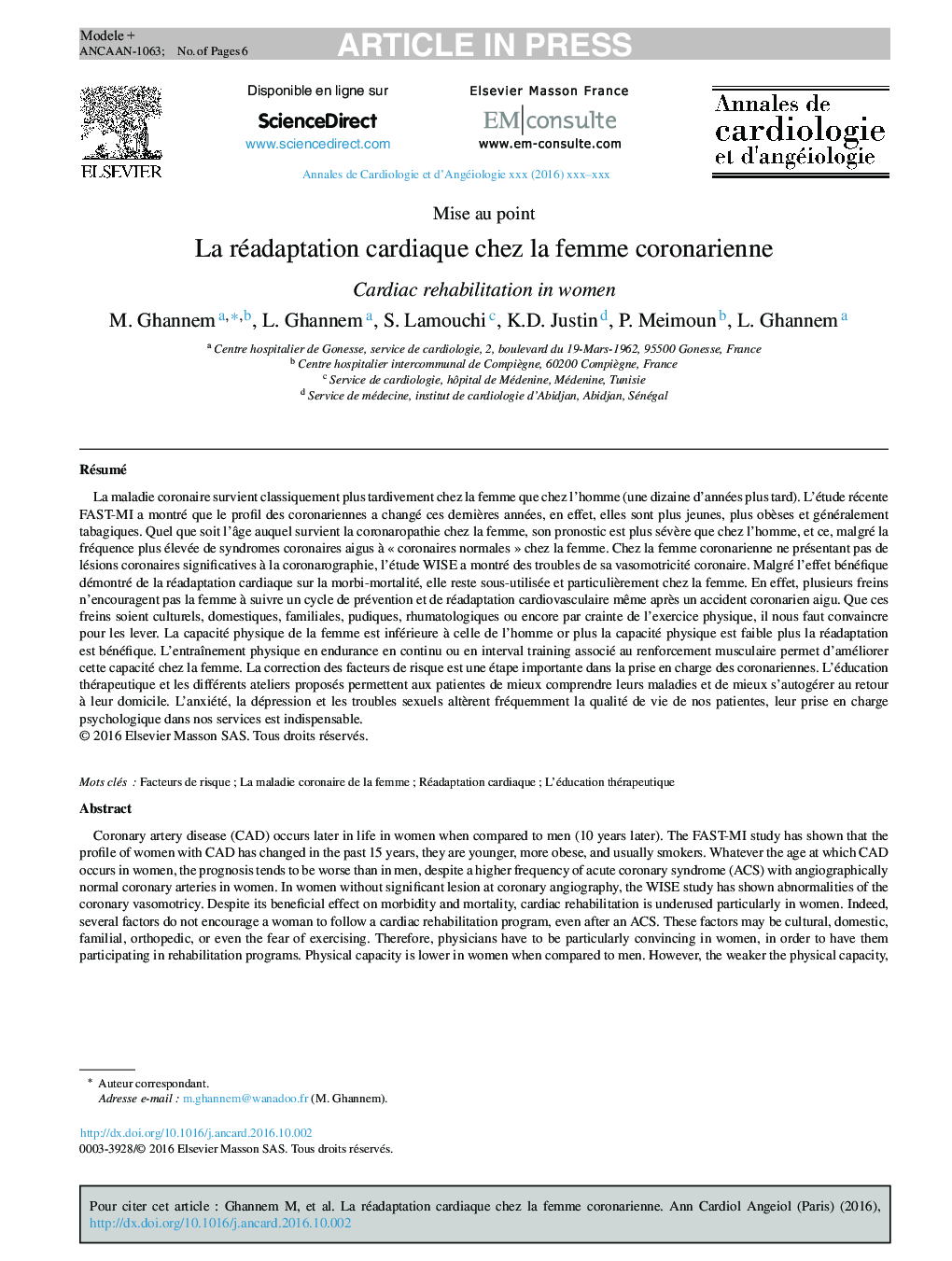| Article ID | Journal | Published Year | Pages | File Type |
|---|---|---|---|---|
| 5596460 | Annales de Cardiologie et d'Angéiologie | 2016 | 6 Pages |
Abstract
Coronary artery disease (CAD) occurs later in life in women when compared to men (10Â years later). The FAST-MI study has shown that the profile of women with CAD has changed in the past 15Â years, they are younger, more obese, and usually smokers. Whatever the age at which CAD occurs in women, the prognosis tends to be worse than in men, despite a higher frequency of acute coronary syndrome (ACS) with angiographically normal coronary arteries in women. In women without significant lesion at coronary angiography, the WISE study has shown abnormalities of the coronary vasomotricy. Despite its beneficial effect on morbidity and mortality, cardiac rehabilitation is underused particularly in women. Indeed, several factors do not encourage a woman to follow a cardiac rehabilitation program, even after an ACS. These factors may be cultural, domestic, familial, orthopedic, or even the fear of exercising. Therefore, physicians have to be particularly convincing in women, in order to have them participating in rehabilitation programs. Physical capacity is lower in women when compared to men. However, the weaker the physical capacity, the better the benefit of cardiac rehabilitation. Physical endurance training continuously or in interval, associated to muscle strengthening can improve the physical capacity in women. Vascular risk factors correction is also an important step for the management of women with CAD. Therapeutic education and several available workshops help women to better understand their disease and to improve their self-management when they return home. Anxiety, depression, and sexual dysfunction frequently deteriorate the quality of life of our patients. Therefore, psychological management is also essential in our departments.
Keywords
Related Topics
Health Sciences
Medicine and Dentistry
Cardiology and Cardiovascular Medicine
Authors
M. Ghannem, L. Ghannem, S. Lamouchi, K.D. Justin, P. Meimoun, L. Ghannem,
